-
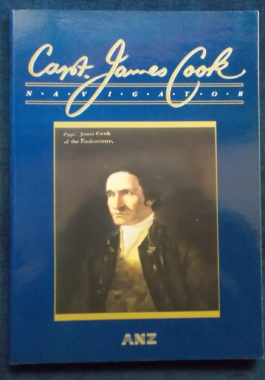 Published by the National Martime Museum of London in association with Campbell Publishing, Sydney. Over the centuries, many men have set out from Britain's shores to fight, trade or explore. Three in particular are known the world over - Francis Drake, Lord Nelson and Captain James Cook. Few people have inspired such interest and admiration as Cook, whose courage and navigational genius determined the course of history in the Pacific region. This book covers the man, his seamanship and the life he literally gave for the British Empire. Full of colour prints, reproductions, maps and photographs.
Published by the National Martime Museum of London in association with Campbell Publishing, Sydney. Over the centuries, many men have set out from Britain's shores to fight, trade or explore. Three in particular are known the world over - Francis Drake, Lord Nelson and Captain James Cook. Few people have inspired such interest and admiration as Cook, whose courage and navigational genius determined the course of history in the Pacific region. This book covers the man, his seamanship and the life he literally gave for the British Empire. Full of colour prints, reproductions, maps and photographs. -
 The Honey Badger (Mellivora capensis) also known as Nick Cummins (Cummo or Nick) is a species of rugby player native to Queensland, Port Macquarie and Perth. Despite its size, the honey badger does not closely resemble other wingers; instead, it bears more anatomical similarities to a forward. It is well known for its extensive range of puns, analogies, mischief and general ability to adapt to any environment. It is primarily carnivorous - beef is its preference - and has few natural predators because of its thick skin, self-deprecating sense of humour and ferocious defensive abilities. Nick Cummins is writing his opus, his tome - his first book. Packed with Nick's sensational sayings, ripper yarns and pure Aussie wisdom, it's a charming collection of short stories celebrating the importance of family, mates, rugby and getting out amongst it (i.e. seeing the world). Illustrated with colour photographs.
The Honey Badger (Mellivora capensis) also known as Nick Cummins (Cummo or Nick) is a species of rugby player native to Queensland, Port Macquarie and Perth. Despite its size, the honey badger does not closely resemble other wingers; instead, it bears more anatomical similarities to a forward. It is well known for its extensive range of puns, analogies, mischief and general ability to adapt to any environment. It is primarily carnivorous - beef is its preference - and has few natural predators because of its thick skin, self-deprecating sense of humour and ferocious defensive abilities. Nick Cummins is writing his opus, his tome - his first book. Packed with Nick's sensational sayings, ripper yarns and pure Aussie wisdom, it's a charming collection of short stories celebrating the importance of family, mates, rugby and getting out amongst it (i.e. seeing the world). Illustrated with colour photographs. -
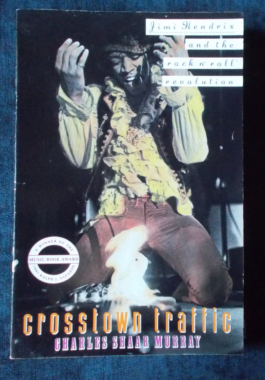
This is the history of a man, the electric guitar and an era of music that will never be forgotten. Murray pulls up the rug where good rock 'n' roll hides and rips through the floorboards with prose as bold and explosive as Hendrix's guitar. Here is an insightful and poignant book about the music of Jimi Hendrix and how rock culture and its influence defined an era. With fabulous archival colour and black and white photos.
-
 For more than forty years, Frederick Forsyth has been writing extraordinary real-world novels of intrigue, from the groundbreaking The Day of the Jackal to the prescient The Kill List . Whether writing about the murky world of arms dealers, the shadowy Nazi underground movement, or the intricacies of worldwide drug cartels, every plot has been chillingly plausible because every detail has been minutely researched. But what most people don’t know is that some of his greatest stories of intrigue have been in his own life. He was the RAF’s youngest pilot at the age of nineteen, barely escaped the wrath of an arms dealer in Hamburg, got strafed by a MiG during the Nigerian civil war, landed during a bloody coup in Guinea-Bissau (and was accused of helping fund a 1973 coup in Equatorial Guinea). The Stasi arrested him, the Israelis feted him, the IRA threatened him, and a certain attractive Czech secret police agent—well, her actions were a bit more intimate. And that’s just for starters... Illustrated with black and white photographs.
For more than forty years, Frederick Forsyth has been writing extraordinary real-world novels of intrigue, from the groundbreaking The Day of the Jackal to the prescient The Kill List . Whether writing about the murky world of arms dealers, the shadowy Nazi underground movement, or the intricacies of worldwide drug cartels, every plot has been chillingly plausible because every detail has been minutely researched. But what most people don’t know is that some of his greatest stories of intrigue have been in his own life. He was the RAF’s youngest pilot at the age of nineteen, barely escaped the wrath of an arms dealer in Hamburg, got strafed by a MiG during the Nigerian civil war, landed during a bloody coup in Guinea-Bissau (and was accused of helping fund a 1973 coup in Equatorial Guinea). The Stasi arrested him, the Israelis feted him, the IRA threatened him, and a certain attractive Czech secret police agent—well, her actions were a bit more intimate. And that’s just for starters... Illustrated with black and white photographs. -
 No-one ever dreamed that her first voyage would be her last. To the elegantly dressed passengers who swept down the Grand Staircase on their way to dinner, the Titanic seemed to the ultimate in comfort and security. But only hours later the greatest ship ever built would lie on the bottom of the ocean. This is the complete story of the 'unsinkable' Titanic - from her construction and launch to her sinking and rediscovery - is told in words and pictures in one lavishly illustrated volume. Art by Ken Marschall; includes numerous black and white archival photographs.
No-one ever dreamed that her first voyage would be her last. To the elegantly dressed passengers who swept down the Grand Staircase on their way to dinner, the Titanic seemed to the ultimate in comfort and security. But only hours later the greatest ship ever built would lie on the bottom of the ocean. This is the complete story of the 'unsinkable' Titanic - from her construction and launch to her sinking and rediscovery - is told in words and pictures in one lavishly illustrated volume. Art by Ken Marschall; includes numerous black and white archival photographs. -
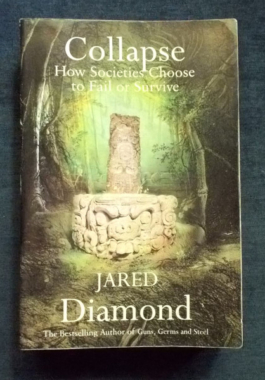
Collapse: Jared Diamond
$10.00Why do some societies and civilisations flourish, while others flounder? What happened to those who made the forlorn, abandoned statues of Easter Island? Or to the architects of the crumbling Mayan pyramids? One day, will our skyscrapers stand derelict and overgrown? Many cultures have disintegrated because of environmental crises - and most of those were self induced. The author takes us on a comprehensive, rich tour of history and the world, with a neat little trip into a possible future. Black and white photos. -
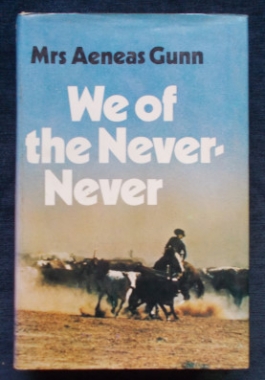
Mrs. Gunn's timeless classic was first published in 1908. Newly married, Jeannie Gunn accompanies her husband to 'The Elsey' the huge cattle station in the Northern Territory, several hundred miles from the nearest town. She is one of the very few white women n the area and at first her presence is resented by the stockmen until her warmth and spirit win their affection and respect. A rare chronicle of pioneer life in the outback, written with moving simplicity to convey the beauty and cruelty of the land, the isolation and loneliness, and the comradeship and kindness of the early settlers.
-
 What effect will deforestation, particularly in the rain forests of Brazil, have on the environment? How is acid rain transforming ecosystems? Can we count on science to solve the problems of overcrowding, species extinction and global pollution? Are scientists selling us out to the military and big business? Can we tolerate more Professor Rushtons? Is science being used to promote racism? Is our education system meeting the challenge? What should we be asking of our educators? David Suzuki tackles these issues and more, in this his first collection of critical essays that explore the limits of knowledge and the connectedness of all things with a challenging candour.
What effect will deforestation, particularly in the rain forests of Brazil, have on the environment? How is acid rain transforming ecosystems? Can we count on science to solve the problems of overcrowding, species extinction and global pollution? Are scientists selling us out to the military and big business? Can we tolerate more Professor Rushtons? Is science being used to promote racism? Is our education system meeting the challenge? What should we be asking of our educators? David Suzuki tackles these issues and more, in this his first collection of critical essays that explore the limits of knowledge and the connectedness of all things with a challenging candour. -
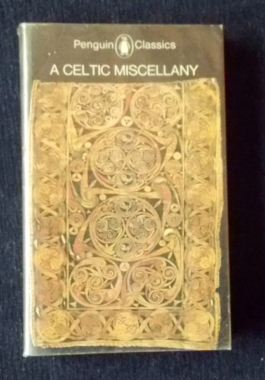 Including works from Welsh, Irish and Scottish Gaelic, Cornish, Breton and Manx, this Miscellany offers a rich blend of poetry and prose from the eighth to the nineteenth century and provides a unique insight into the minds and literature of the Celtic people. It is a literature dominated by a deep sense of wonder, wild inventiveness and a profound sense of the uncanny, in which the natural world and the power of the individual spirit are celebrated with astonishing imaginative force. Arranged by theme: from the hero-tales of Cú Chulainn, Bardic poetry and elegies to the sensitive and intimate writings of early Celtic Christianity.
Including works from Welsh, Irish and Scottish Gaelic, Cornish, Breton and Manx, this Miscellany offers a rich blend of poetry and prose from the eighth to the nineteenth century and provides a unique insight into the minds and literature of the Celtic people. It is a literature dominated by a deep sense of wonder, wild inventiveness and a profound sense of the uncanny, in which the natural world and the power of the individual spirit are celebrated with astonishing imaginative force. Arranged by theme: from the hero-tales of Cú Chulainn, Bardic poetry and elegies to the sensitive and intimate writings of early Celtic Christianity.


